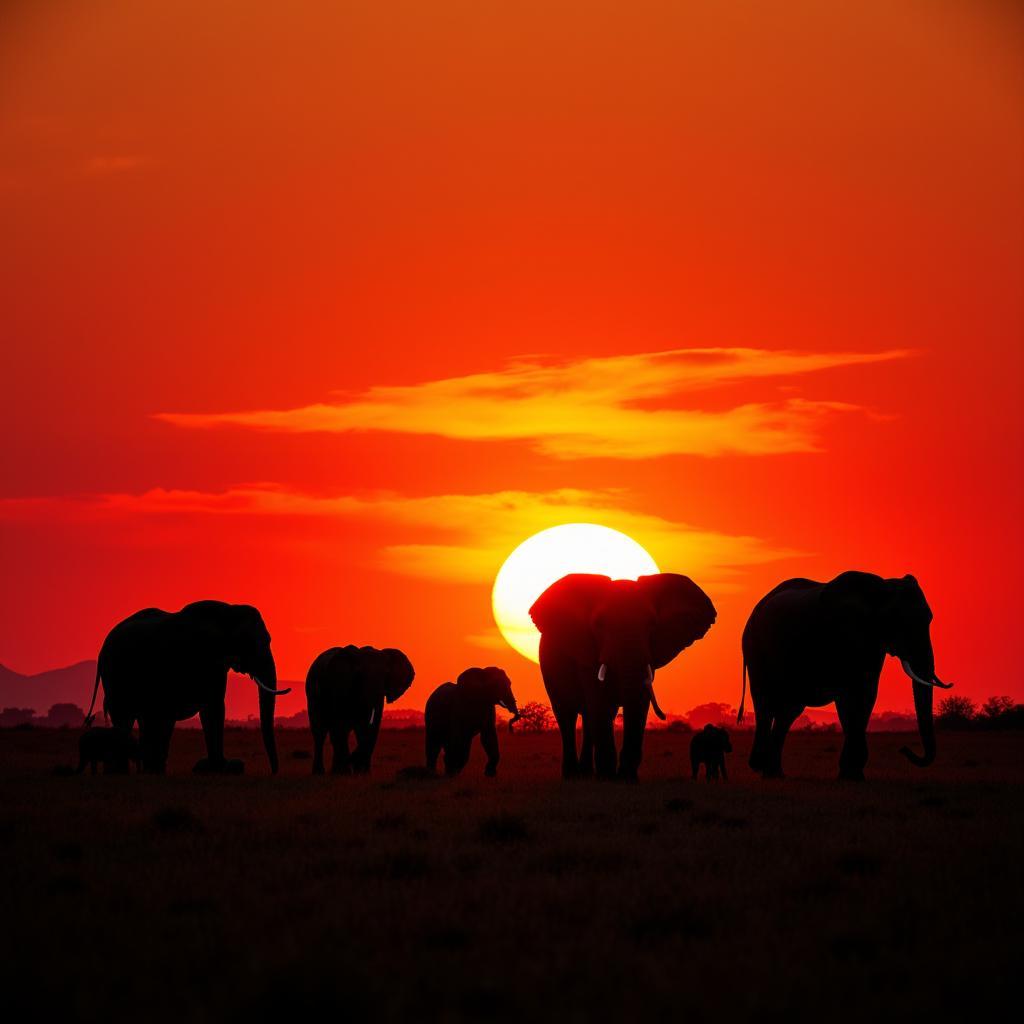Amazing African Elephant Facts for KS2 Learners
African elephants are the largest land animals on Earth! These gentle giants roam the savannas and forests of Africa, captivating us with their size and intelligence. Let’s dive into the fascinating world of African elephants and uncover some amazing facts perfect for KS2 learners.
Unveiling the Secrets of African Elephants: Size, Diet, and Habitat
African elephants are truly impressive creatures. But how big are they, what do they eat, and where do they live? An adult African elephant can grow up to 4 meters tall, that’s taller than a double-decker bus! They can weigh up to 6,000 kilograms, about the same as six small cars. Imagine that! Their enormous size requires a lot of fuel, so they spend most of their day eating. Their diet consists mainly of grasses, leaves, bark, and fruit. They can eat up to 300 kilograms of food in a single day! They roam across a variety of habitats, from savannas and grasslands to forests and even deserts, always searching for food and water.
The Importance of Family: African Elephant Social Structures
African elephants are highly social animals. They live in herds led by the oldest and wisest female, called the matriarch. The herd is made up of related females and their young calves. Males leave the herd when they reach adolescence and often live solitary lives or form small bachelor groups. The matriarch plays a vital role in the herd, leading them to food and water sources and protecting the young from predators. The strong bonds within the elephant herd are essential for their survival.
African Elephant Trunks: A Multi-Purpose Tool
Did you know that an African elephant’s trunk is one of the most versatile tools in the animal kingdom? It’s not just for breathing and smelling! Elephants use their trunks for a wide range of activities, from picking up small objects like berries to lifting heavy logs. They use it to drink water, shower themselves with dust and mud, and even communicate with each other through a complex system of rumbles and trumpets. An elephant’s trunk has over 40,000 muscles, making it incredibly strong and dexterous.
Threats to African Elephants: Poaching and Habitat Loss
Sadly, African elephants face serious threats. Poaching for their ivory tusks has significantly reduced their numbers. Habitat loss due to deforestation and expanding human settlements also poses a major challenge. Conservation efforts are crucial to protect these magnificent animals and ensure their survival for future generations. Learning about these challenges and supporting conservation organizations can make a real difference.
How can we help protect African elephants?
We can help by supporting organizations working to combat poaching and protect elephant habitats. We can also spread awareness about the importance of conservation and encourage others to take action.
Dr. Aminata Sow, a renowned wildlife biologist specializing in African elephant conservation, emphasizes the crucial role education plays: “Educating future generations about the importance of these magnificent creatures and the threats they face is key to ensuring their long-term survival.”
African Elephant Facts: Quick Answers for KS2 Learners
What is the largest land animal?
The African elephant is the largest land animal.
What do African elephants eat?
African elephants primarily eat grasses, leaves, bark, and fruit.
Where do African elephants live?
They live in various African habitats, including savannas, forests, and deserts.
What is special about an elephant’s trunk?
An elephant’s trunk is a multi-purpose tool used for eating, drinking, communicating, and more.
Why are African elephants endangered?
Poaching and habitat loss are the main threats to African elephants.
 African Elephant Family in Savannah at Sunset
African Elephant Family in Savannah at Sunset
Conclusion: Protecting the Giants of Africa
African elephants are incredible animals with fascinating adaptations and complex social lives. Learning about these amazing creatures helps us appreciate the wonders of the natural world. By understanding the threats they face, like poaching and habitat loss, we can all contribute to their protection. Remember, every effort, no matter how small, can make a difference in ensuring these magnificent giants continue to roam the African landscape for generations to come.
FAQ
- How long do African elephants live? They can live up to 70 years in the wild.
- How much water can an elephant drink? An elephant can drink up to 200 liters of water a day.
- How fast can an elephant run? They can run up to 25 miles per hour.
- How do elephants communicate? They communicate through rumbles, trumpets, and body language.
- What is the difference between African and Asian elephants? African elephants have larger ears and a curved back, while Asian elephants have smaller ears and a straighter back.
- How many African elephants are left in the wild? Estimates suggest around 400,000.
- How can kids help protect elephants? Kids can learn about elephants, support conservation organizations, and spread awareness.
Another fascinating fact about African elephants relates to their tusks. Did you know that they are actually elongated teeth? Both male and female African elephants have tusks, which they use for digging, foraging, and defense. Unfortunately, these magnificent tusks are also the reason they are targeted by poachers. You can read more about this issue in our article about the ivory trade and its impact on elephant populations [link to related article on your website, if any]. If you’re interested in exploring other African wildlife, check out our piece on the Big Five animals of Africa [link to related article on your website, if any].
For any assistance or inquiries, please contact us: Phone: +255768904061, Email: [email protected] or visit our office at Mbarali DC Mawindi, Kangaga, Tanzania. We have a 24/7 customer support team available to assist you.
